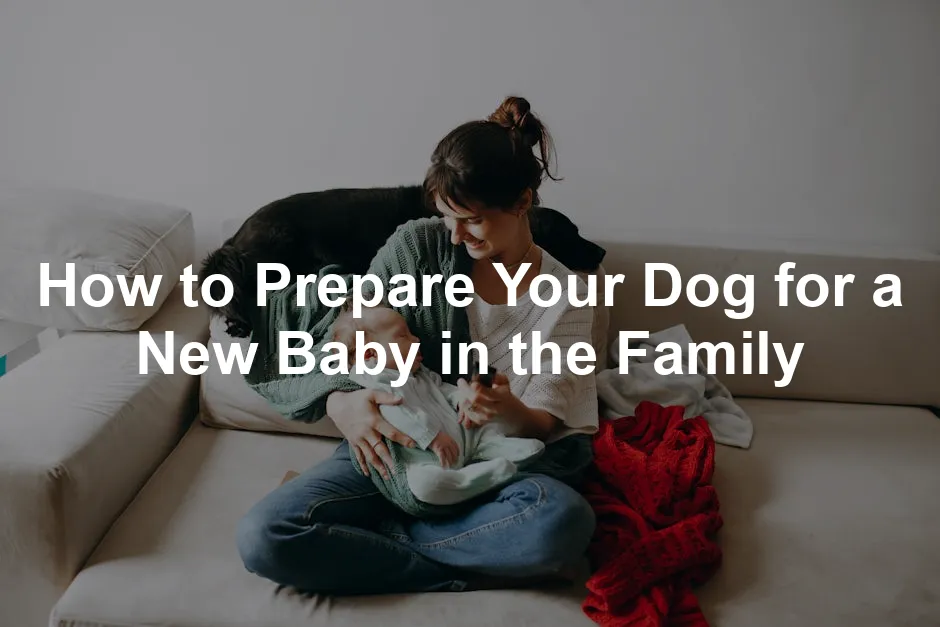Introduction
In the whirlwind of preparing for a new baby, don’t forget about your four-legged family member! As a proud pup parent, the arrival of a human baby can feel like a seismic shift for your furry friend. They’ve been your baby, your companion, and your confidant, and suddenly they’re expected to share the spotlight. But fear not! With a little planning and preparation, you can ensure a smooth transition for your dog. This guide will walk you through essential steps to make your dog feel included and secure as your family grows.
It’s essential to acknowledge that dogs thrive on routine and familiarity. Any changes in their environment can lead to confusion and anxiety. With the arrival of a baby, new sounds, smells, and even a shift in your attention can leave your furry companion feeling a bit neglected. But don’t worry! We’ve got your back. You can help your dog adjust to this new chapter in your family life.
Start early. The sooner you introduce your dog to the upcoming changes, the better. This process isn’t about making your dog feel like an afterthought; it’s about ensuring they remain a cherished part of the family. Prepare your dog for a new baby by incorporating them into the preparation process. Gradually expose them to baby gear and sounds, and establish new routines that include everyone.

Creating a positive environment for your dog is crucial. Use treats and praise to reinforce good behavior as they navigate these changes. Speaking of treats, consider investing in dog training treats. They can be a game changer for rewarding your pup during this transitional period. Who doesn’t love a good snack, right? With a little love and patience, you can transform potential stress into a joyful coexistence. So let’s roll up our sleeves and dive into the nitty-gritty of prepping your pup for the arrival of your little one. After all, a happy dog equals a happy home!
Summary
Bringing a new baby into your home is a life-changing event that affects not just the parents, but also your beloved pets. Dogs, being creatures of habit, can struggle with changes in their environment and routine. This article dives into the multifaceted approach of preparing your dog for a new baby, covering everything from acclimatizing them to baby sounds and smells to establishing new routines and boundaries.
We will explore the importance of gradually introducing baby equipment, desensitizing your dog to baby noises, and familiarizing them with new scents. Additionally, we will provide tips on setting up safe spaces for both your dog and the baby, ensuring everyone feels secure in their new roles.
As we navigate through the intricacies of this transition, we will also emphasize the significance of maintaining your dog’s routine and providing them with the attention they deserve. With patience, love, and proper training, you can facilitate a joyful coexistence between your dog and your new baby, paving the way for lifelong friendships. So, let’s dive into the best practices for welcoming your new bundle of joy without leaving your furry friend in the dust!

Why Do Some Dogs Have Difficulty with a New Baby?
Bringing a baby into the family can be a rollercoaster for your dog. Change is tough for our furry friends, who thrive on routine and familiarity. Suddenly, they must adapt to a new family member, which can feel like a seismic shift in their world. Dogs love their schedules. They know when to expect walks, meals, and cuddle time. A new baby can disrupt this predictable rhythm, leaving them puzzled and stressed.
Imagine your dog, who’s used to being the center of attention, suddenly receiving less of it. Less snuggles, fewer walks, and maybe even some restricted areas in the house. That’s a lot to process! New noises and smells enter the scene too: the sound of a baby crying can be alarming, and the scent of baby lotion might be confusing.
Real-life examples abound. Take Bella, a Golden Retriever, who used to bask in her owner’s love. One day, a baby arrived, and suddenly, she felt like she had been demoted to second place. Bella’s owner noticed her acting out, whining for attention, and even refusing to eat. It’s not just Bella; many dogs react similarly when faced with such dramatic changes.
Another example comes from a friend who welcomed twins. Their once relaxed Labrador, Max, became overly protective and anxious, barking at every unfamiliar sound. Max had difficulty adjusting to not being the sole focus. These situations highlight how sensitive dogs are to changes in their environment and the importance of preparing them adequately for the arrival of a baby.
Acknowledging these psychological aspects can help you support your dog during this transition. With a little patience and proactive measures, you can help them feel included in the family, rather than sidelined. After all, a happy dog and a happy baby can coexist beautifully!

Structuring New Routines
Adjusting Dog’s Daily Schedule
With a new baby on the way, your dog’s routine needs an upgrade. Think of it as a gentle transition rather than a shock to their system. Begin by gradually changing your dog’s daily activities. Start adjusting meal times, walks, and play sessions to mimic what life will be like once the baby arrives. If your dog is used to long walks, try shortening them a bit. This way, they won’t feel suddenly abandoned when the new arrival demands your attention.
Also, consider varying the times you usually walk your dog. Babies thrive on schedules, and so do dogs! If your pup is accustomed to morning walks, introduce some afternoon strolls. This will help them adapt to receiving attention at different times, easing the transition. Make it a fun game! Reward your pup with treats for calm behavior during these changes. Who doesn’t love a good snack? By preparing your dog for less attention, they’ll be less likely to feel neglected when baby takes center stage.
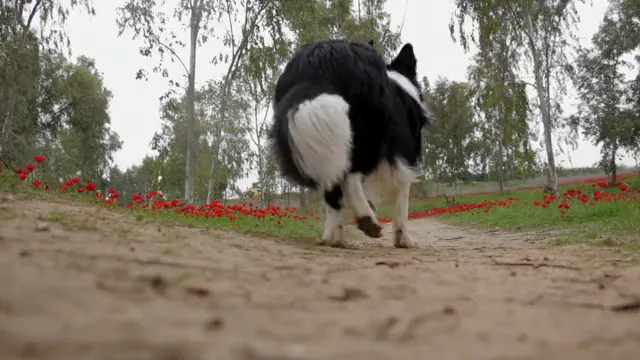
Speaking of snacks, a dog shampoo can help keep your pup looking fresh and clean, making them even more adorable as they adjust to their new role. After all, who doesn’t want a well-groomed pooch nearby when you’re busy with the baby?
Setting Boundaries
Now that your pup is adjusting to the new routine, it’s time for some rule-making. Establishing boundaries is crucial before your little one arrives. Create dog-free zones in your home, especially the nursery. This isn’t just to protect your baby; it also gives your dog a clear understanding of where they can and can’t go.
Introduce baby gates or close doors to limit access to these areas. Allow your dog to sniff around the nursery before it becomes off-limits. This will help them feel included and less anxious when they can no longer roam freely. Remember, anticipation can be more frightening than the actual change. By preparing them in advance, you can ease potential anxiety and prevent feelings of resentment.
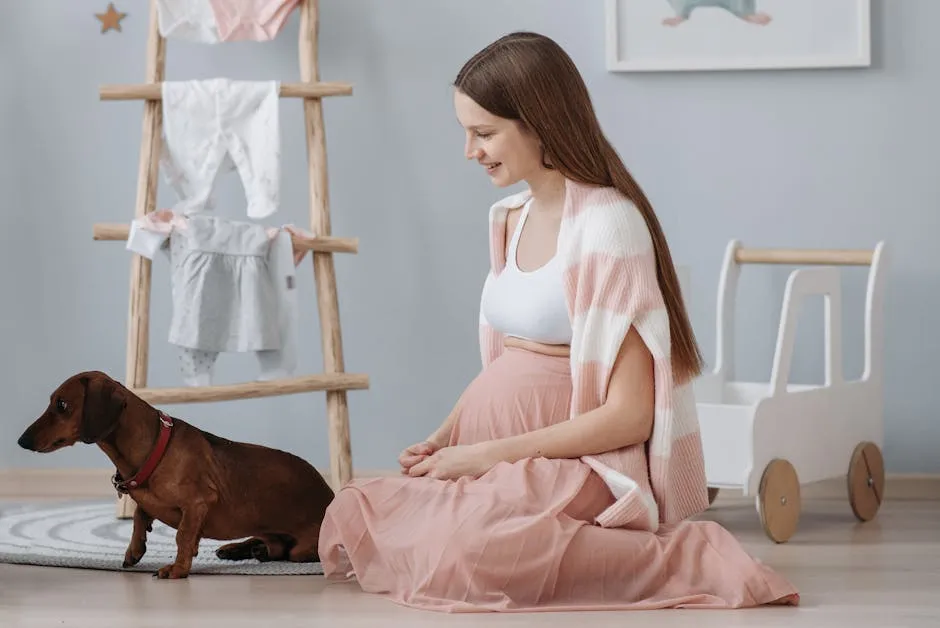
Training Your Dog for the Transition
Basic Commands and Manners
Training is your best friend when transitioning to a new family dynamic. Focus on reinforcing basic commands like “sit,” “stay,” and “leave it.” These commands are not just for show; they’re practical tools to keep your dog calm around the baby. If your dog can master a solid “stay,” you’ll have a better chance of keeping them at a safe distance when necessary.
Consider enrolling your dog in obedience classes. Not only will they learn essential skills, but it’s also a great way to bond with your furry friend. Plus, who doesn’t love a well-behaved dog? Practicing these commands regularly will ensure your dog feels secure and knows their place in the family hierarchy.
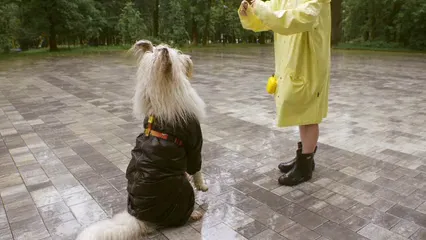
For those looking to take training to the next level, a dog training clicker can be an effective tool to reinforce those commands. It’s a fun way to train and will help build your pup’s confidence as they learn their new role.
Settle Training and Desensitization Exercises
Settle training is another essential skill. Teach your dog how to relax away from the family when needed. Start by creating a cozy space for your pup with their favorite bed and toys. Gradually train them to feel comfortable being alone in this space for short periods. Use treats to reward calm behavior.
Desensitization exercises are equally important. Play recordings of baby noises at a low volume while your dog is engaged in positive activities. Gradually increase the sound level as they become accustomed. This will help them associate baby sounds with positive experiences rather than stress.
Incorporating these strategies will help ensure that your dog adjusts smoothly to the changes ahead. With a little preparation, patience, and lots of love, your dog can transition into their new role as a big brother or sister with ease.

Introducing Baby to Your Dog
The First Encounter
Bringing home a baby is a momentous occasion, and introducing your dog to this new family member must be done with care. Start this process before the baby arrives. Allow your dog to explore baby gear like cribs and strollers. This helps them get used to the new sights and smells that will soon fill your home. You can even reward your dog with treats during this exploration. Positive associations are key!
When it’s time for the big introduction, keep the atmosphere calm. Hold the baby in your arms and let your dog sniff the baby’s feet or blanket. This way, they can get familiar with the new scent without feeling overwhelmed. Make sure someone else is present to help manage the dog during this encounter. A calm demeanor from you will reassure your dog that everything is alright.
If your dog exhibits curiosity, reward them with treats. This reinforces that being near the baby is a positive experience. If they seem anxious or overly excited, consider taking a step back. Patience goes a long way here! The goal is to create a relaxed environment where your dog feels secure. Gradually increase the duration of their interactions, but always supervise closely.
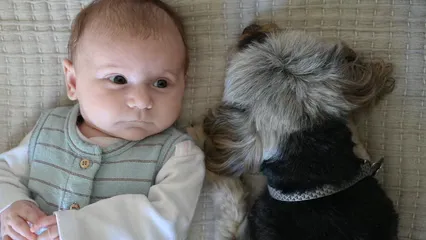
Speaking of supervision, a baby monitor can be invaluable during these early days. It allows you to keep an eye on your baby while ensuring your pup is adjusting well to the new family dynamics.
Supervision and Safety
Never forget that safety is paramount. Never leave your dog and baby alone together, even for a moment. Accidents can happen in the blink of an eye, and it’s better to be safe than sorry. Designate specific areas in your home where the dog can retreat comfortably, away from the baby. Baby gates can be a lifesaver, creating a safe space for both your dog and your child.
While you’re busy with diaper changes or feedings, it’s crucial to keep an eye on your dog. Separate them if necessary, using gates or closed doors. You might think your dog would never hurt a baby, but they might not understand the sudden noise or movement of a small human.
Provide your dog with engaging toys or long-lasting chews to keep them occupied when you’re focused on the baby. Consider a interactive dog toy that keeps them mentally stimulated. This not only keeps your dog busy but also helps them associate the baby’s presence with positive experiences. As your dog adjusts to their new family dynamics, maintaining supervision will ensure a safe and loving environment for everyone.
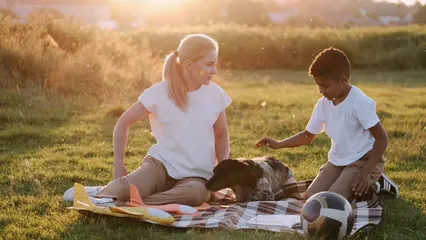
Post-Baby Arrival: Maintaining Balance
Once the baby arrives, it’s vital to keep your dog engaged and loved. Your furry friend might feel neglected with the sudden influx of attention on the baby. To combat this, designate specific times to play with your dog. A brief game of fetch or a walk can work wonders in reassuring your dog they’re still an important part of the family.
Keep routines as consistent as possible. Regular feeding and walking schedules can help your dog adjust to the new normal. Consistency is key in reducing feelings of jealousy or confusion. Dogs thrive on routine, and your pup will appreciate the familiar structure amidst the changes.
If your dog shows signs of jealousy—like barking or nudging for attention—acknowledge these feelings. Offer praise and a treat when they remain calm during baby-related activities. This reinforces that good behavior around the baby is rewarded.
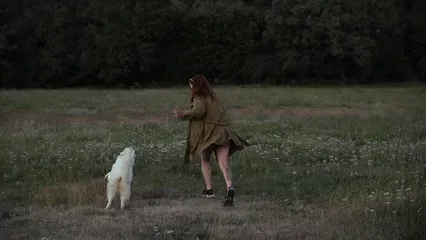
Lastly, consider involving your dog in baby-related activities. Let them observe you during diaper changes or feedings. This inclusion can strengthen their bond with the baby and make them feel less like an outsider. A dog anxiety vest can also help your pup feel secure during these changes.
With a proactive approach, you can help your dog navigate this new chapter of life, ensuring they feel loved and secure while adjusting to their role as a big sibling.

Conclusion
In conclusion, preparing your dog for the arrival of a new baby is not just about managing a transition; it’s about fostering a harmonious environment for your growing family. By investing time and effort into preparation, training, and gradual introductions, you can ensure that your dog feels secure and included in this exciting new chapter of life. Remember, patience and consistency are key. With love and understanding, your dog and your new baby can form an unbreakable bond that will last a lifetime.
FAQs
What if my dog shows signs of aggression towards the baby?
If your dog displays aggression towards the baby, don’t panic. First, assess the situation calmly. Remove your dog from the immediate area and ensure everyone is safe. Next, consult a professional dog trainer or behaviorist. They can help identify triggers and provide tailored strategies to modify your dog’s behavior. It’s crucial to address these issues early on, as aggressive behaviors can escalate if not managed properly. Remember, seeking help is a sign of a responsible pet owner!
How long should I prepare my dog before the baby arrives?
Start preparing your dog at least three to six months before the baby’s arrival. This timeline allows ample opportunity for gradual adjustments. Begin introducing baby equipment and sounds early on. You want your dog to associate these new experiences with positive outcomes. Rushing the process may lead to anxiety or confusion for your pup. The more time they have to adapt, the better they will adjust once the baby is home.
Can I introduce my dog to the baby right away?
Patience is key! It’s best to wait until the right moment to introduce your dog to the baby. When bringing your newborn home, ensure the environment is calm and relaxed. Allow your dog to sniff the baby while you hold them securely. This approach minimizes stress for both your dog and the baby. Gradually increase their interactions over time, and always supervise closely. Creating a positive first impression is essential for fostering a loving bond.
What are some signs my dog is not adjusting well?
Watch for signs of stress or anxiety in your dog. Common indicators include excessive barking, whining, hiding, or refusing to eat. If your dog is acting out, such as chewing on furniture or displaying aggression, these behaviors signal that they may be struggling with the changes. Pay attention to any drastic shifts in their routine or demeanor. Addressing these signs early can prevent further issues and help your dog feel more secure.
Is it possible for dogs and babies to get along?
Absolutely! With the right preparation and gradual introductions, dogs and babies can form wonderful relationships. Many dogs adapt beautifully to having a new family member. They can be protective, gentle, and loving companions for children. Positive experiences during introductions will set the stage for a lifelong bond. Just remember to supervise their interactions and provide plenty of love and attention to both your dog and your newborn. A harmonious home is within reach!
Please let us know what you think about our content by leaving a comment down below!
Thank you for reading till here 🙂
All images from Pexels

